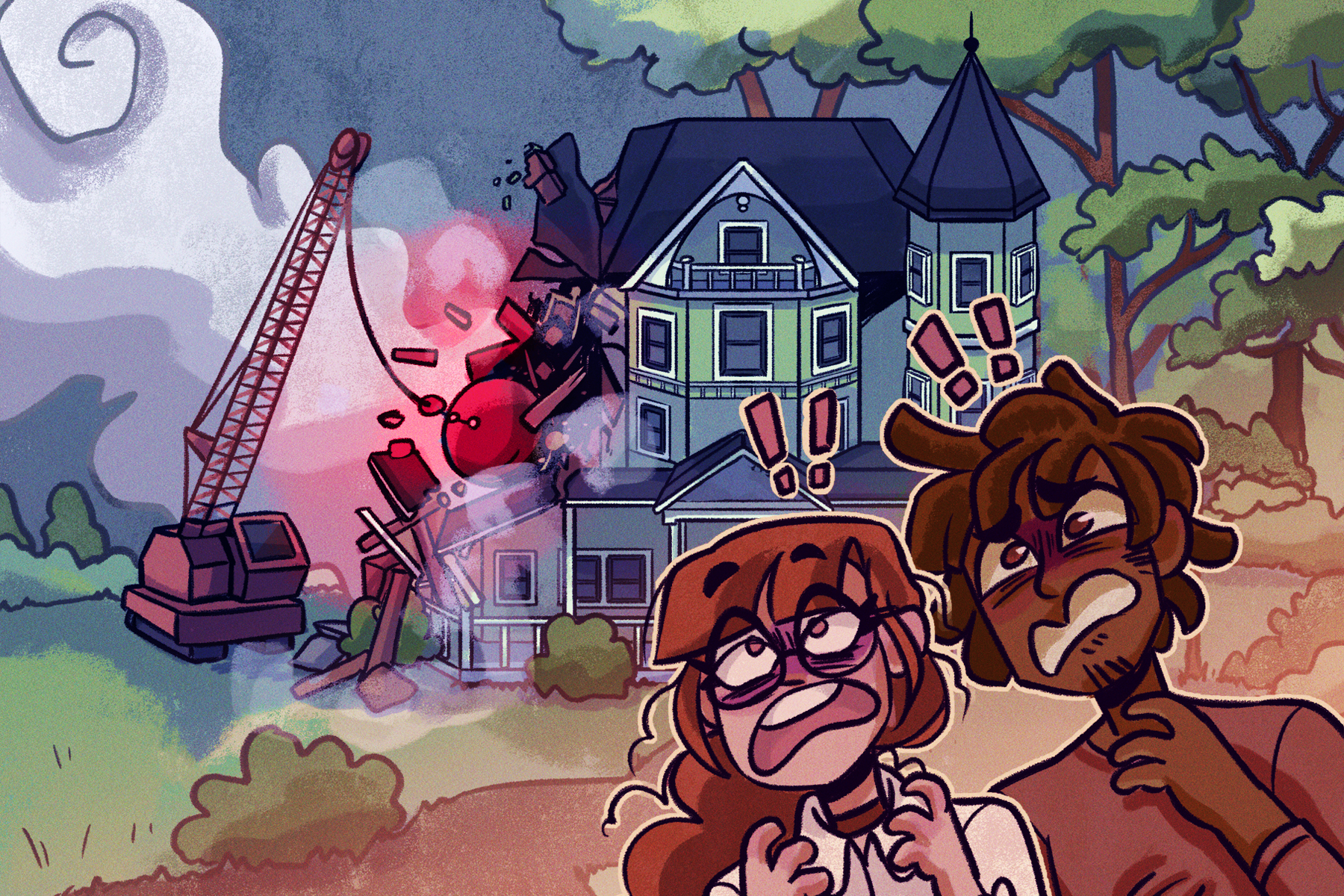Many individuals resonate with the old proverb “Home is where the heart is.” As developers actively tear down historic homes, many argue that home is also “where the history is.” From the ornate dollhouse-like intricacies of Victorian homes to the sleek geometry of mid-century models, historic houses are a reflection of an era’s aesthetics. The craftsmanship used to create these homes is unparalleled, alongside the years of memories captured within their vintage walls. However, new developers often dismiss these qualities, prioritizing profit over preservation.
The internet has become a battleground, as users fight against the consistent demolition of historic homes — one main player being Instagram’s famous @cheapoldhouses. Run by married couple Elizabeth and Ethan Finkelstein, this Instagram page has nearly 2 million followers. The Instagram page shares listings for endearing historic houses across America at affordable prices, some even free.
The page’s owners recently started their own show on the HGTV network, sharing the same name. In it, the couple visits old houses across the country, sharing the undeniable charm they hold with their viewers. From Cape Cod-style bungalows to opulent mansions, there’s a style option for every taste. Many of these houses would have been demolished, but thanks to social media, decades of history have been saved and enjoyed.
The desire for old homes isn’t a niche. According to The New York Times, “Recent data provided by Zillow showed homes built before 1940 garnering nearly as many saves per housing unit as houses from the early 2000s.” It is understandable why families have an interest in these historic homes. Beyond their alluring design, many are also built with higher-quality supplies and were created when standards for architecture were higher.
Old homes contradict the blandness of mass-produced developments that are common in suburbs and residential areas. Opposed to being like every other structure nearby, these abodes become a source of pride — there is a sense of honor in protecting what our ancestors built. By moving into these historic homes, people become part of their heritage, defying the belief that buildings are easily replaceable.
When wrecking balls tear down an old home, decades of history are lost forever, actively erasing elements of a community’s cultural identity. Bringing new life into the “old” is a pressing theme in modern society, especially as fears of climate change rise. Thrifting clothes and furniture have been heralded as a means to fight against fossil-fueled mass production that creates unnecessary waste. According to a study by the National Trust for Historic Preservation and the Preservation Green Lab, in almost every instance, the reuse of buildings is more environmentally friendly than demolition and rebuilding.
The study discovered that it can “take between 10 to 80 years for a new energy-efficient building to overcome, through efficient operations, the climate change impacts created by its construction.” Not only does the preservation of old homes keep history intact; it also helps save the planet. Financially, putting money into fixing up an older home is usually more cost-efficient than starting fresh, and the finances actively contribute to the culture of a community.
Old buildings can also attract people to a neighborhood, furthering the success of local businesses. Some people love antique stained glass, while others adore the artistry of gingerbread molding. Whatever the case may be, there is an arguable appeal to these structures, a unique aura that draws outsiders in. The historic town of Williamsburg, Virginia, created an entire economy around its Revolutionary-era structures, utilizing actors adorned in period dress to set the scene.
Some states even have preservation grants for those looking to restore old homes. For instance, New York City’s Landmark Preservation Commission awards anywhere from $10,000 to $30,000 to help fix up historic houses in the city. On average, old homes tend to be less expensive than newer models, because newer homes typically have higher property taxes. Additionally, in many new developments, the house is not necessarily complete upon moving in.
This can result in years of disruptive construction nearby, while simultaneously paying more on average. On the other hand, coming into an established community and ripping down their history by way of noisy construction disturbs the quality of life for many — the very definition of starting off on “the wrong foot.”
While many people admire old homes, others are more hesitant. City planner M. Nolan Gray expressed his disdain for old homes in an Atlantic article, stating: “We fetishize old homes. Whatever your aesthetic preferences, new construction is better on nearly every conceivable measure, and if we want to ensure universal access to decent housing, we should be building a lot more of it.” He goes on to say the potential downfalls of old homes are their lack of safety, less room and lack of accommodation.
As a result, there was pushback from the old house community, and blog writer Scott Sidler wryly stated, “What struck me most was not the audacity and smugness to write an article about how anyone who disagrees with him is clearly out of their mind. Clearly us old-housers suffer from lead poisoning which makes us Cuckoo-for-COCOA-PUFFS. But what really chapped my hide was the utter disregard for facts and lack of real world experience.”
While there are possible safety issues, and thus a lack of accommodation in some old homes, that does not mean they should automatically be written off as uninhabitable. In today’s world climate, fixing things should always be prioritized over destruction, and this includes houses. New homes come with a plethora of risks — as does any building — but that should not lead to us shutting out history. Accessible ramps can be added to old homes, as can elevators and wider doorways, and lead paint can be removed. History can be preserved without spending a fortune on building a new structure. Most importantly, people can honor what was intended for America — a place that consistently works to fix its faults, as opposed to giving up and starting over.

















